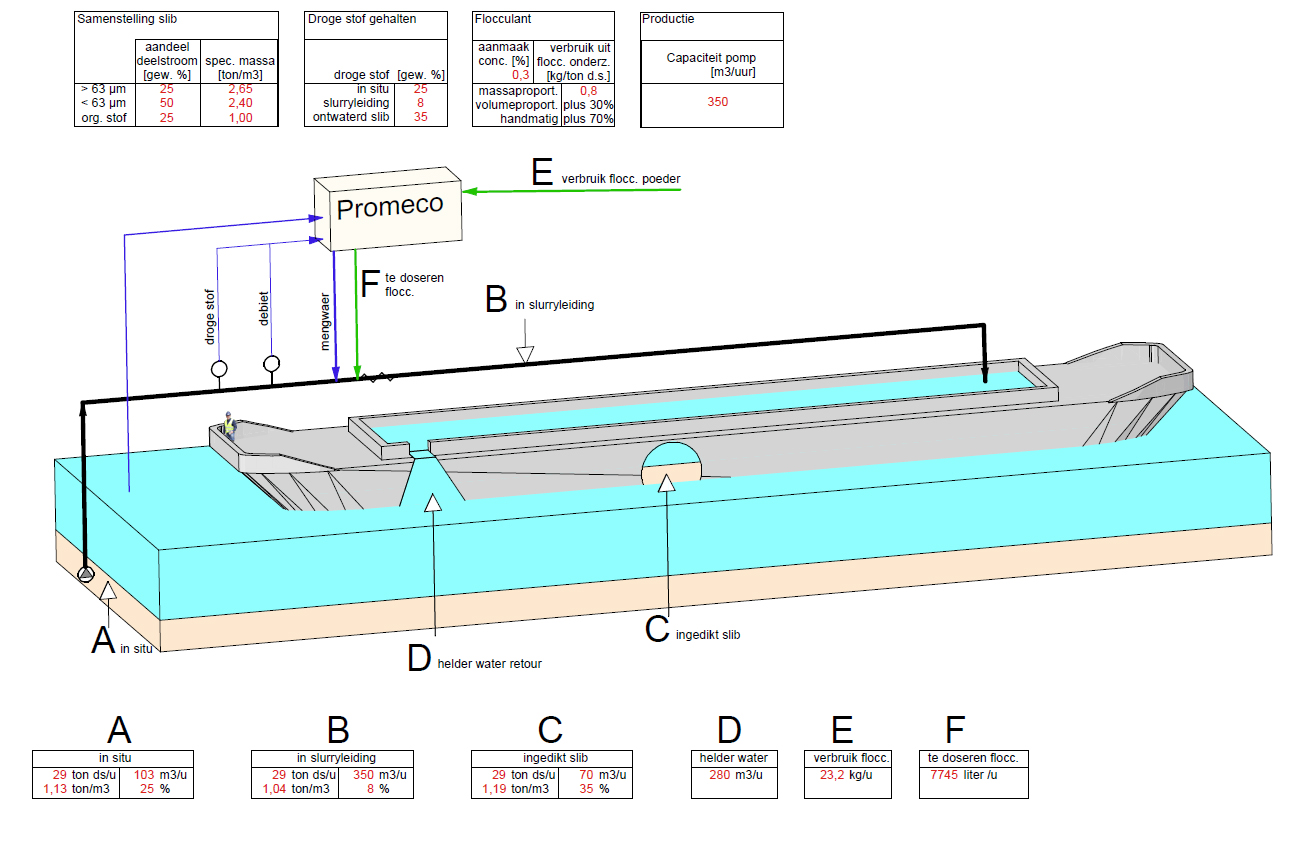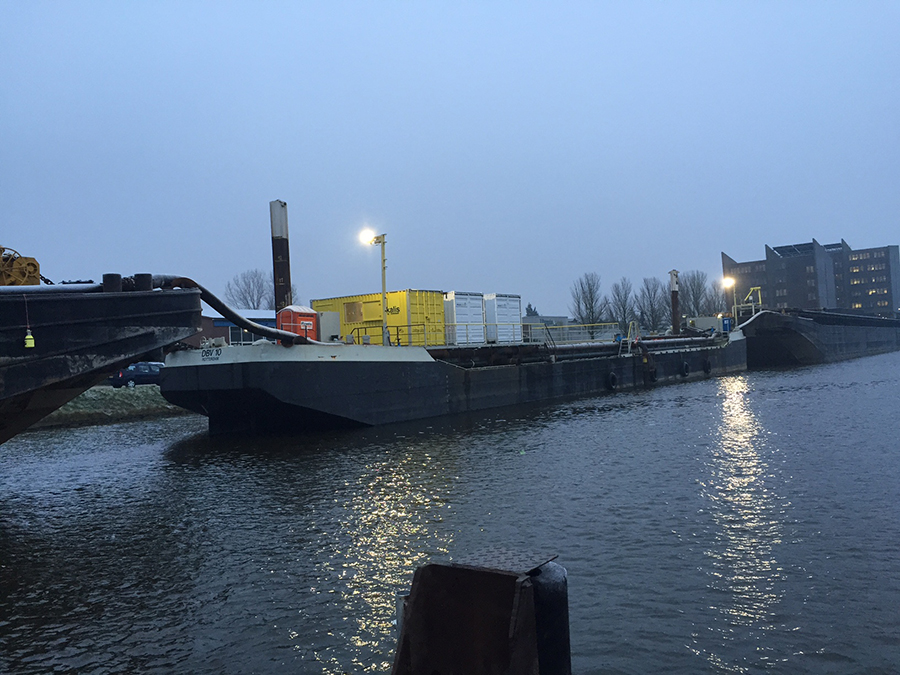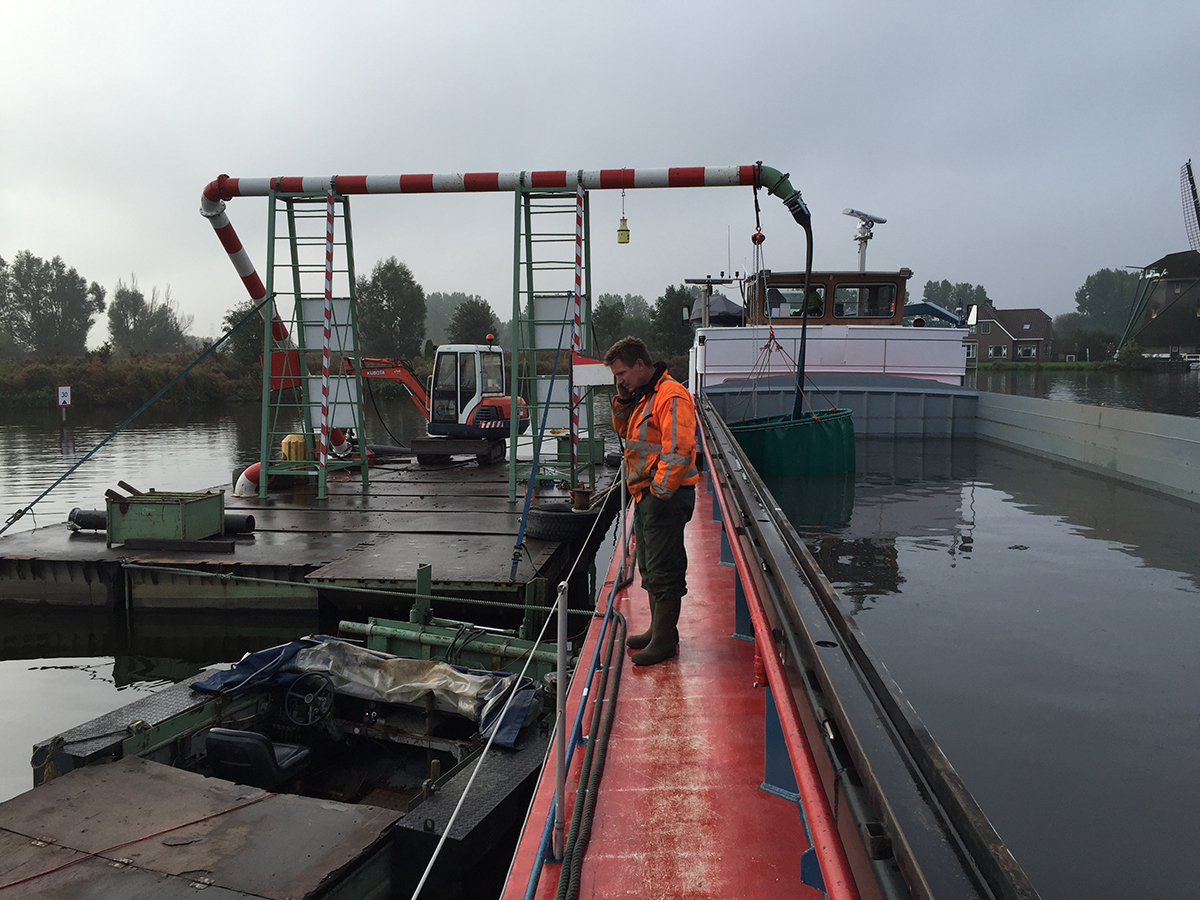Ship
When needed, Promeco can dewater sludge in a ship or barge. This is an efficient way of transporting the sludge. Moreover, the entire process requires minimal space.
The objective is to transport as high a quantity of dry solids as possible. However, since a great deal of water is required for the pipe transport, the ship would quickly fill up with thin slurry within a few hours. Solution: optimal dewatering, so that only stabilised sludge remains behind before it is transported. And this is the speciality of Promeco. You can see an example of this in the illustration. Click on the illustration to zoom in.
As an example, the flocculant requirements and the production are stated above the visual fictitious characteristics of the sludge. The calculated quantities in all phases of the process are stated underneath. Promeco prepares these calculations (a so-called mass flow balance) beforehand for each project. This provides us with a good insight of the desired dewatering process. The data is used in the software that calculates the optimal dosing of flocculant during the entire project. In the short term, we provide you with the opportunity to calculate the mass flow balance yourself at this location by inputting the required data.
Our expertise enables us to work efficiently and effectively, allowing you to save on your investment. However, there are even more advantages: read more about these on the Sludge dewatering page.
The process
What can we see on the illustration? The in-situ dredging spoil is pumped up by a dredging pump, a process in which a lot of excess water is included. The dredging spoil is pumped through a dredging pipe in the ship. During the pumping, Promeco continuously measures the dry solids content and flow rate of the dredging spoil. In the processing computer, where the data for the mass flow balance has been entered, based on the measurements, it is continuously calculated how much flocculant we need to use for the dosing. This then takes place further along in the pipe, possibly adding a quantity of mixing water. A mixing device in the pipe then mixes the flocculant with the dredging spoil. Ultimately, dredging spoil dosed with flocculant ends up in the ship, where the sludge particles will quickly settle. Clear water is routed back to the original surface water.




